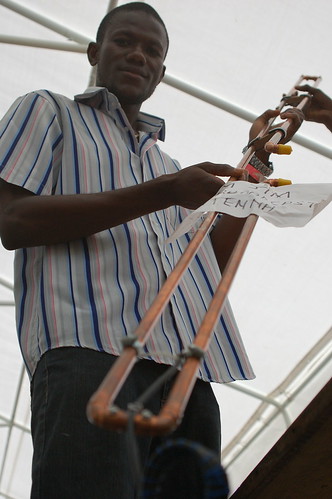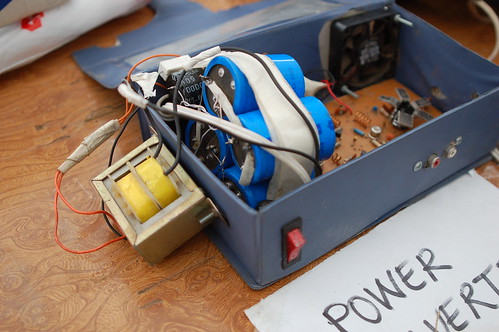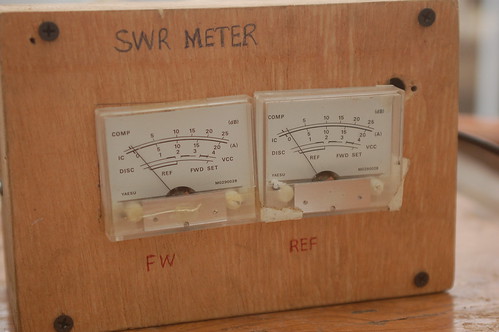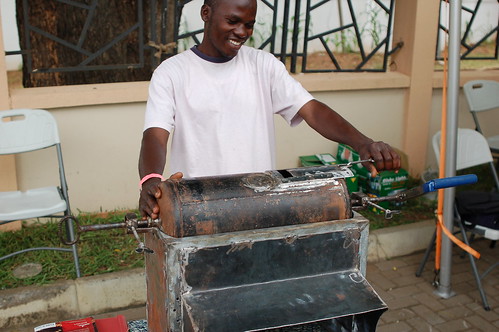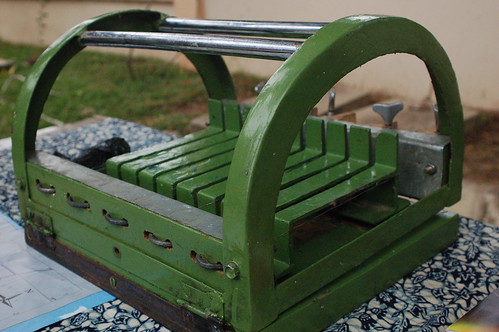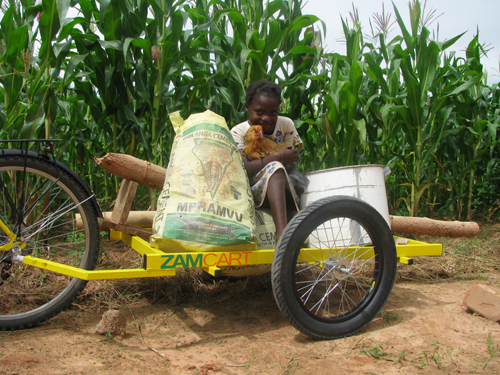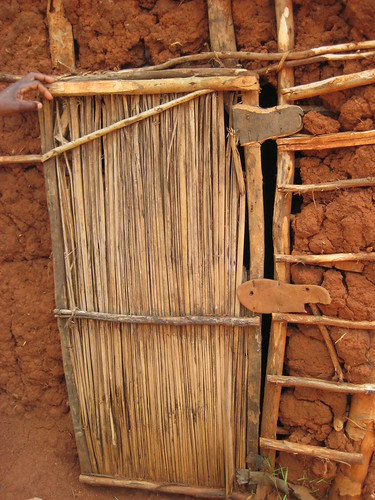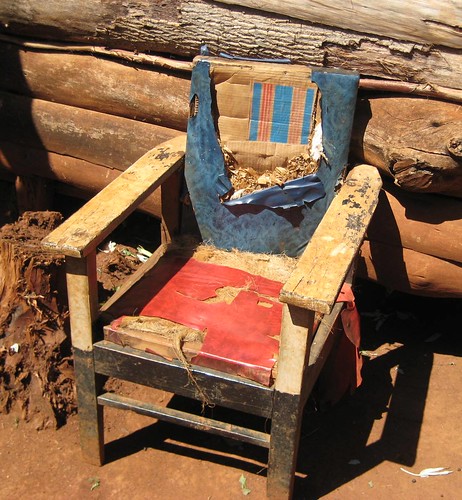I’m a sucker for radios and antennas, and was just so excited to see the guys from Accra Polytechnic at Maker Faire Africa. Hayford Bempong, David Celestin and Michael Amankwanor are three members of the National Society of Black Engineers who have created a full radio with their own funds and brains.
They showed up at the event and setup the local Maker Faire Africa radio station, running at 101.7 FM. In conjunction with the speakers that they setup for the close proximity announcements, the radio was used to transmit up to a couple thousand meters away and spread the word about upcoming activities.
Basic electronics
David Celestin has been building power inverters and other electronic devices from scratch since he was a teenager. Below is one of his first power inverters, that still works, and which runs out of a little box. You can tell it is all fabricated from scraps and locally available materials.
Here is their home-brew VHF SWR meter:
Antennas
The team also creates their own antennas from scratch, including the “slim jim” below, “ground plane and a circular antenna.
